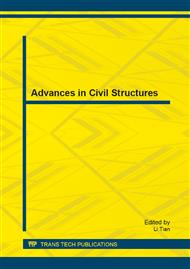p.845
p.849
p.854
p.860
p.865
p.869
p.875
p.881
p.887
Comparative Analysis of Finite Element Method and Analytical Method on the Truss
Abstract:
This paper takes a typical truss as an example, respectively to using the analytical method and the finite element method for the internal force is calculated, the calculation results show that the two error within a reasonable range, the analytical method is to many assumptions as the premise, the calculation is the main force, the main force is not fully representative of truss real stress state, and the finite element method considering the situation in a more general and general, so the results are relatively reliable
Info:
Periodical:
Pages:
865-868
Citation:
Online since:
August 2013
Authors:
Keywords:
Price:
Сopyright:
© 2013 Trans Tech Publications Ltd. All Rights Reserved
Share:
Citation:


